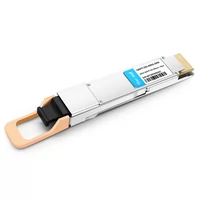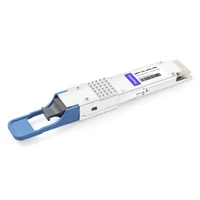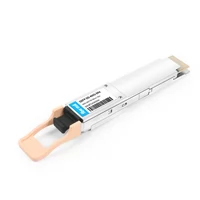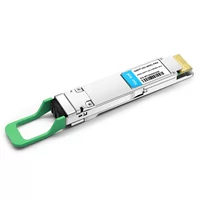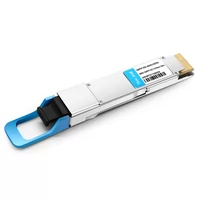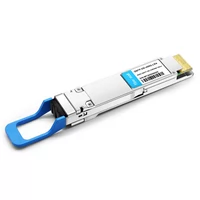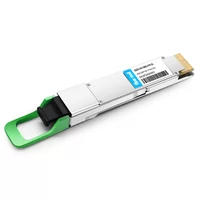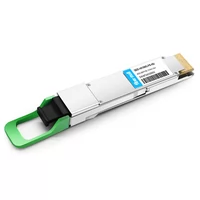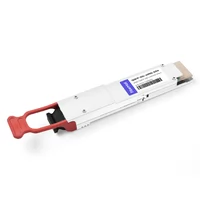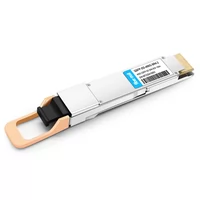There has been an increasing need for faster network connectivity in the telecom sector with rapid advancements there. The deployment of 400G optical networks is a major step in such directions. The evolution of this cutting-edge technology has come from the application of coherent optical transmission, which massively expands data transfer capabilities beyond any previously known range. This article strips these networks of some misconceptions by providing a baser technical overview of 400G technology, its role in present-day communication infrastructure, and what it portends for the future of data communication technology. The readers will comprehend how these networks are designed, what the common issues of their implementation are, and how they are going to change the world.
Table of Contents
ToggleWhat advantages do 400G Optical Networks bring to the table?
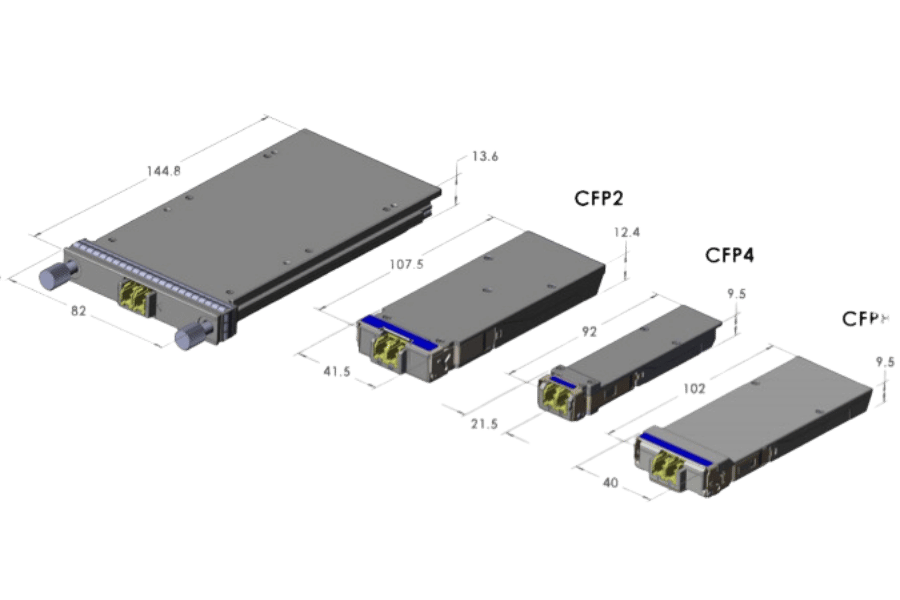
Increasing Network Capacity
As the number of devices in the world continues to increase, so does the demand for bandwidth. This is why more service providers are adopting 400G Optical Networks: the implementation significantly increases the network capacity by using sophisticated modulation methods and by increasing baud rate transmissions. This new technology contributes to a better application of existing fibre infrastructure, which translates to greater data output without the need for more physical cables. 400G technology can be deployed using wavelength division multiplexing (WDM), which allows for several channels to be transmitted over a single pair of fiber, greatly increasing the volume of data transmitted at once. In this way, service providers are able to satisfy customers with higher bandwidth requirements for video streaming, cloud services, and other bandwidth-dependent applications.
Powering Network Efficiency
Another major benefit of 400G O Networks is how they are designed – minimizing power requirements and latency, which increases the network’s efficiency. Furthermore, Built using advanced components and employing improved cooling techniques, 400G technology minimizes power consumption in 400G optics deployments, helping to reduce operating costs and the ecological impact. In addition, these networks utilize small-footprint network equipment and advanced signal processing techniques, which increase space and reduce the propagation delay, allowing for a faster data exchange speed amid all the changes. This would give the service provider more flexibility, giving them the capacity to handle massive amounts of data traffic without compromising quality, allowing for a smooth transition to the new emerging technologies and services integration.
This Can Help With Enhanced Connectivity and Better Data Rates
400G optical networks utilize enhanced connectivity and data rates through advanced modulation techniques and expansion of channel capacity. Advanced modulation schemes like 16-QAM or 64-QAM are used in these networks to enhance bits-per-symbol transmission. As the technology has developed, so has network connectivity, enabling larger capacity links and consistent data movement even over large distances. Moreover, with adaptive link protocols in place, 400G networks are able to make adjustments to the available spectrum and make the most of the existing structures and speed up data transmission around the network.
How does the QSFP-DD 400G Optical Module work?
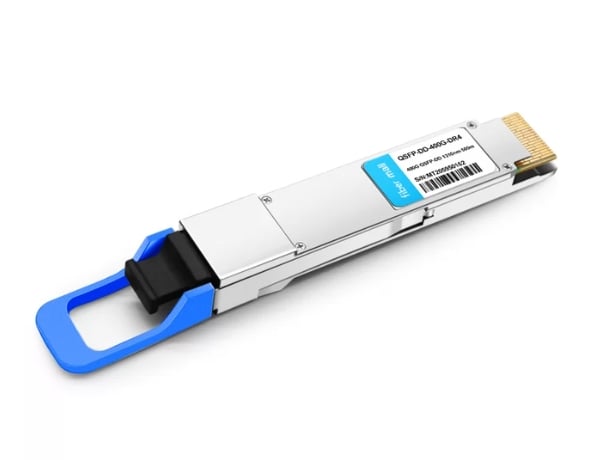
A Primer on the Optical Transceiver
An optical transceiver is an important component in 400G networks as it converts electrical signals into optical signals and vice versa. These transceivers comprise a light signal emitting unit, an optical signal receiving unit, and electronics for data management. For instance, the case of QDD (Quad Double Density) modules is that they are capable of handling high data rates and, due to their design, are optimized for scalability and performance in a datacenter. To package technologies that include advanced materials and multiple lanes to transmit data in parallel, the QDD transceiver with this package achieves a very high data throughput, and the transmission takes place in an effective and stable network.
Characteristics of the QSFP-DD 400G
The QSFP-DD 400G format has many characteristics that aid in its purpose and operation in fast networks. First of all, it is compliant to 8x lanes of electrical interfaces in double density form factor which also increases the port count in the 400G modules, more so in the data centers. Secondly, there is no need to upgrade the existing infrastructure as the module would fit in readily used networks and allow the integration of 400G optical transceivers overview with ease, which is an advantage. It also has a high capacity of four hundred Gbps, which must be enough to handle high data volume without hindrance. Also in place are better cooling and power systems that are associated with the normal conditions that are expected to assist performance and reliability with regard to thermal aspects especially with regard to the 400G modules. In addition to that, the error correction method used in the QSFP-DD module is capable of passing only a few errors to the upper application layers, which means that errors during communication are almost negligible, thus making it robust and dependable.
Use Cases Today In Data Centers
The QSFP-DD 400G optical module is an equally important part of today’s data centers because it supports the data transfer volume, which is essential for cloud data storage, artificial intelligence, and high-performance computing applications. With it, data centers can now accommodate data management as high as 400 Gbps. Such management enables efficient data center operations with very high data throughput and low latency, which are the backbone of any effective data center operations. More so, the fact that the QSFP-DD module can be integrated into the existing framework enables deployments to be upgraded without additional disruption, as well as futureproofing the system in terms of data requirements, making it a key element in the advancement of present-day data center design and concept.
What Tough Turns Do 400G Optical Networks Have?
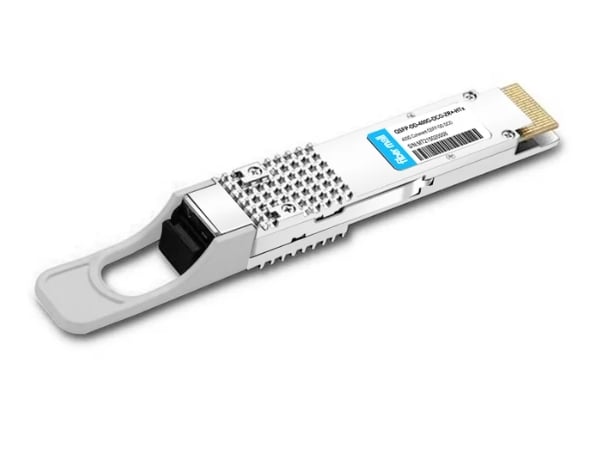
Bandwidth Management
As part of the ever-expanding requirements, the coherence of some of the system limitations with the mounting network requirements remains the only challenge. It is safe to say with users’ applications becoming more complicated in nature and sophisticated in structure, a point is reached in which plugging in a single unit of 400G technology starts to inflict havoc to the data center in order to not get into disarray, resources need to be appropriately utilized which in turn flags the need to be highly smart. These smart strategies include dynamic allocation, traffic prioritization of certain users (heavy weights/backbones) and intelligent load balancing across various resources. Moreover, infrastructure expansion plans aiming to support future growth in excess of the already high traffic must be turned into reality on ever-expanding fiber networks without compromising the quality of existing services. Taking into account these issues allows data center networks to provide the required stable high-speed data flows suitable for the most robust applications.
Tackling the Network Infrastructure Requirements
There is no denying the impact of 400G optical networks, and to harness their usefulness, it is important to roll out network structures that are robust and scalable to address their needs now and into the future. There is need to invest in fresh technologies like sophisticated fiber optics and enhanced capacity switches. Additionally, infrastructure has to be constructed with the aim of assimilation into an ecosystem where upgrades and additions do not come with major changes. Automation and SDN deployment facilitates efficient networking and management, while comprehensive testing procedures and performance monitoring systems ensure integrity and quality. With such focus areas, the aim of enabling modern applications which are increasingly data-intensive is made possible.
Dealing with Optical Wavelength Issues
In order to use 400G technology in an optical network, optical limitations need to be worked around, which should be possible through the efficient application of wavelength-division multiplexing (WDM) technology, which allows the transport of multiple streams of data through one single fiber. Some techniques like coherent optical transmission and new-generation modulation formats can improve the spectral efficiency, hence making better use of available wavelengths. In addition, such tunable transceivers can provide adaptability for the network by allowing the set parameters to cope with different levels of bandwidth that may be required. Moreover, advanced methods of optical processing of signals can reduce the interference and deterioration of the signal considerably. Altogether these techniques tackle the problems posed by the restriction on wavelengths and improve the performance of optical networks that are currently in use and that are likely to come in an envisioned future.
Why is 400G Ethernet Creating a New Standard in High-Speed Networking?
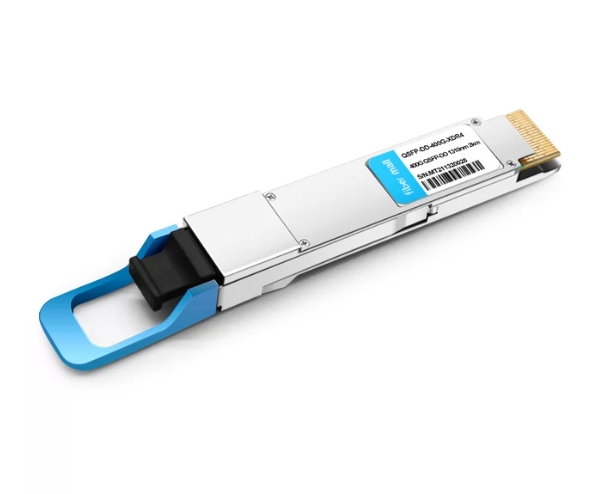
Important Attributes of 400 Gigabit Ethernet DNS Encryption
The demand for high-definition video streaming, cloud computing, and even regular internet use is increasing every day. In this regard, 400 Gigabit Ethernet (400GbE) offers a much-needed boost in terms of network speed and efficiency, as it is well above the previous standards of Ethernet. One of the most important components of the 400GbE network system is the advanced modulation technique that ensures the signals are properly maintained even during long-distance transmissions. In addition, 400GbE uses less power which makes it ideal for cloud centers and other applications that require dense servers without overheating. It also provides better scalability as the network expands and additionally allows people to add to their existing infrastructure with more capabilities. All of these attributes put together are the reason why apartments in 400GbE systems are essential in ensuring that high level networks are efficient, current, and relevant in future developments.
Effect on the Network Operators
The implementation of 400GbE greatly influences network operators because it allows them to cope with increasing data traffic more effectively and reliably than ever before. The increased capabilities allow for the handling of very large volumetric data, which is necessary for modern applications and services. This technology helps operators to improve their infrastructure, decrease latency, and enhance the network performance in the 400G capacity scenarios. Furthermore, the growing capacity of the 400GbE also makes deploying new networks easier by reducing the duration and cost of large replacement deployments. By and large, the 400GbE allows network operators to deliver services of the highest quality optimally, compete in changing market realities, and sustain in the data-driven world with 400G ports.
What Role Does Transceiver Technology Concerning 400G Modules?
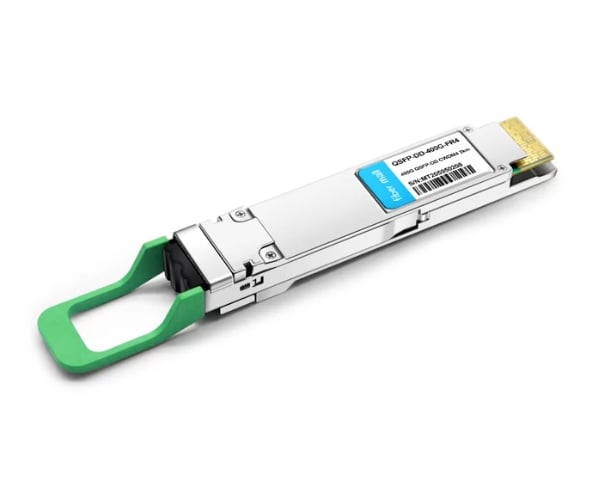
Understanding the 400G Optical Transceiver Modules
The Optical Module is one of the many available modules that enable 400G solutions since these are responsible for changing electrical data signals into light signals that can be carried over fiber optic cable. This is important in achieving efficient data transfer over a wider distance at higher speeds. All modules are required to meet the complex performance requirements of 400GigE networks. Its design uses high-density and PAM4 (Pulse Amplitude Modulation) technologies. These apparatus are converging towards greater compactness and versatility with television-like capacity and performance; innumerable overseas connectors and other types are developing, including applications that are only now taking shape. Among those are QSFP-DD and OSFP that are leading the pack in this domain but in different aspects such as power request, heat dispersion, and port accommodation. The optical modules accommodate the 400G solutions and enable the transfer of large amounts of data over long distances without significant loss of signal strength, enabling the utilization of networks in business operations that are data-intensive in nature.
A form factor’s role in the work of 400G networks should not go unrecognized.
When it comes to 400G transceiver integration, many people point out that the form factor fundamentally influences the performance and efficiency of the entire network. Different form factors, such as the QSFP-DD and the OSFP, are developed to suit particular needs, such as power, heat, and port density. The form factor, therefore, determines the number of ports that can be deployed per unit rack space, hence the scalability and flexibility of the network. Moreover, the structural characteristics of each form factor type of transceiver determine the levels of heat and energy consumption, which are necessary to maintain performance levels in compact data center layouts. Form factor selection must be done carefully to support a company’s business goals and future growth as 400G integration will be tough if such conditions are not adhered to.
Integrating Into The Current Optical Transport Network
Adding 400G transceivers into the older optical transport networks has to be done carefully with respect to compatibility, interoperability and network topology. These transceivers provide a gradual upgrade option to the existing brown-field related to the 400G DWDM applications and, as such, are aimed at making the live network work better. However, the important factor here is the investiture in the physical layer equipment and the structure of all software and all system management modules to handle higher flows. Also, appropriate forward error correction and modulation formats are important to retain signal performance over long distances. By looking into these issues, it would be easier for the business to move to better 400G technology without interfering with their networks’ architecture and cutting off their useful life.
Reference Sources
Frequently Asked Questions (FAQs)
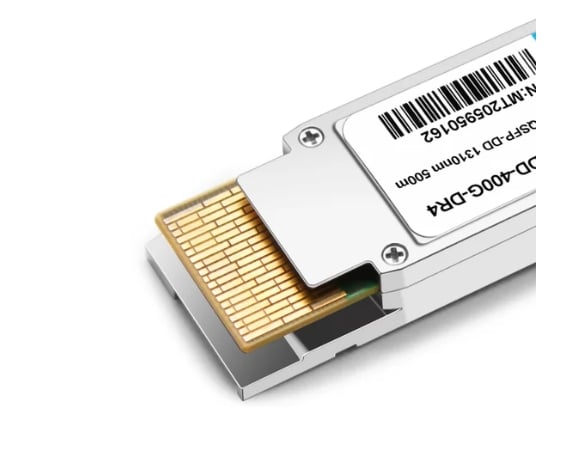
Q: What is the 400G QSFP-DD Optical Transceiver and how does it work?
A: The 400G QSFP-DD Optical Transceiver is an optical module that transfers data at very high speeds of 400 Gigabits per second. It employs the latest optics technology to send data through fiber optic networks, usually using many optical wires or wavelengths. Because of the new innovations in the QSFP-DD (Quad Small Form-factor Pluggable Double Density), there are increased cooling and density features that are more advanced than older versions of transceivers, especially for 400G modules.
Q: What are the main advantages of 400G optical networks?
A: The list of advantages of 400G optical networks starts with the vast increase in the capacity bandwidth, reduction in the power consumed, latency increase, and enhanced opportunities for more data demand a network can provide. These networks will also support 5G networks, AI, and cloud computing in the future. Furthermore, 400G gives the advantage of utilizing more data through the existing fiber cables, so there is less need for the expensive installation of further fibers.
Q: How is 400G technology addressing the current issues in networks?
A: 400G technology eliminates a number of network issues by virtue of higher data transmission speeds and data capacity. One is congestion in intra-data-center and metro networks. Moreover, it supports the high growth of bandwidth applications sufficiency within existing fiber use. 400G also helps to improve the integration of SDN and NFV, which makes network management much more convenient and flexible.
Q: What are the different categories of modules available for 400G QSFP-DD?
A: Short-reach applications require 400G QSFP-DD modules such as the 400G DR4, the FR4 for longer ranges, and the LR4 for long connections. Other variants include 400G SR8 for multimode fiber and 400G ZR for long-haul DWDM (Dense Wavelength Division Multiplexing) applications. Different types are specifically designed to meet the standard distance requirements of different types of architectures, which makes deployment of 400G effective and more flexible, especially for 400G DWDM solutions.
Q: How would you say the 400G QSFP-DD differs from its counterpart 400G OSFP?
A: 400G QSFP-DD forms part of the backward compatible range due to its OSFP (Octal Small Form-factor Pluggable) design. Likewise, both are designed for 400G due to the presence of 400G optical transceivers that only require the support of a single optical wavelength for their operations. The main difference between the two is that while the OSFP offers better thermal management to cover up for future high-speed applications, the QSFP-DD form factor, on the other hand, is easier to expand infrastructure coverage since it is compatible with other existing forms of factors. Although both have similarities, the selection of one depends on the network specifics and the required scalability of the future.
Q: What are the main barriers to deploying 400G optical networks?
A: 400G would face several problems while being deployed; some include the affordability of upgrading outdated systems, technical compatibility within certain systems, thermal loss from excessive energy consumption, and having a more robust quality signal at higher speeds. Furthermore, focusing on the scope of architecture management and observation in 400G also broadens the discussion, as there is a constant need for certain validation tools for measurement purposes.
Q: How does a silicon photonics technology enable the deployment of 400G optical transceivers?
A: Silicon photonics technology is important in developing 400G optical transceivers since it allows for combining optics and electronics on a single integrated circuit. This decision leads to compact transceivers that are more efficient and less expensive. Absorbing silicon photonics also enables supporting larger bandwidth density and better signal-to-noise ratios, which are vital for achieving 400 Gigabits/seconds transfer rate and over with small form factors geraniums like QSFP-DDs, more so with the use of 400G wavelengths.
Q: What can we expect from the 400G technology and beyond?
A: There are possibilities for wide adoption of 400G technology shortly owing to T1 technology advancements, though modulations and signal throughput improvements are expected to go up to 800G, even 1.6T. Modulation signals such as direct-sequence spread spectrum and digital signal processing could also be employed. Work is also done to improve energy efficiency and ultimately enable higher throughput. The future development of the 400 Gigabit/s optical communication is likely to impact the future demands of the system.
Related Products:
-
 QSFP-DD-400G-SR8 400G QSFP-DD SR8 PAM4 850nm 100m MTP/MPO OM3 FEC Optical Transceiver Module
$149.00
QSFP-DD-400G-SR8 400G QSFP-DD SR8 PAM4 850nm 100m MTP/MPO OM3 FEC Optical Transceiver Module
$149.00
-
 QSFP-DD-400G-DR4 400G QSFP-DD DR4 PAM4 1310nm 500m MTP/MPO SMF FEC Optical Transceiver Module
$400.00
QSFP-DD-400G-DR4 400G QSFP-DD DR4 PAM4 1310nm 500m MTP/MPO SMF FEC Optical Transceiver Module
$400.00
-
 QSFP-DD-400G-SR4 QSFP-DD 400G SR4 PAM4 850nm 100m MTP/MPO-12 OM4 FEC Optical Transceiver Module
$450.00
QSFP-DD-400G-SR4 QSFP-DD 400G SR4 PAM4 850nm 100m MTP/MPO-12 OM4 FEC Optical Transceiver Module
$450.00
-
 QSFP-DD-400G-FR4 400G QSFP-DD FR4 PAM4 CWDM4 2km LC SMF FEC Optical Transceiver Module
$500.00
QSFP-DD-400G-FR4 400G QSFP-DD FR4 PAM4 CWDM4 2km LC SMF FEC Optical Transceiver Module
$500.00
-
 QSFP-DD-400G-XDR4 400G QSFP-DD XDR4 PAM4 1310nm 2km MTP/MPO-12 SMF FEC Optical Transceiver Module
$580.00
QSFP-DD-400G-XDR4 400G QSFP-DD XDR4 PAM4 1310nm 2km MTP/MPO-12 SMF FEC Optical Transceiver Module
$580.00
-
 QSFP-DD-400G-LR4 400G QSFP-DD LR4 PAM4 CWDM4 10km LC SMF FEC Optical Transceiver Module
$600.00
QSFP-DD-400G-LR4 400G QSFP-DD LR4 PAM4 CWDM4 10km LC SMF FEC Optical Transceiver Module
$600.00
-
 QDD-4X100G-FR-Si QSFP-DD 4 x100G FR PAM4 1310nm 2km MTP/MPO-12 SMF FEC CMIS3.0 Silicon photonics Optical Transceiver Module
$650.00
QDD-4X100G-FR-Si QSFP-DD 4 x100G FR PAM4 1310nm 2km MTP/MPO-12 SMF FEC CMIS3.0 Silicon photonics Optical Transceiver Module
$650.00
-
 QDD-4X100G-FR-4Si QSFP-DD 4 x 100G FR PAM4 1310nm 2km MTP/MPO-12 SMF FEC CMIS4.0 Silicon photonics Optical Transceiver Module
$750.00
QDD-4X100G-FR-4Si QSFP-DD 4 x 100G FR PAM4 1310nm 2km MTP/MPO-12 SMF FEC CMIS4.0 Silicon photonics Optical Transceiver Module
$750.00
-
 QSFP-DD-400G-ER4 400G QSFP-DD ER4 PAM4 LWDM4 40km LC SMF without FEC Optical Transceiver Module
$3500.00
QSFP-DD-400G-ER4 400G QSFP-DD ER4 PAM4 LWDM4 40km LC SMF without FEC Optical Transceiver Module
$3500.00
-
 QSFP-DD-400G-SR4.2 400Gb/s QSFP-DD SR4 BiDi PAM4 850nm/910nm 100m/150m OM4/OM5 MMF MPO-12 FEC Optical Transceiver Module
$900.00
QSFP-DD-400G-SR4.2 400Gb/s QSFP-DD SR4 BiDi PAM4 850nm/910nm 100m/150m OM4/OM5 MMF MPO-12 FEC Optical Transceiver Module
$900.00

